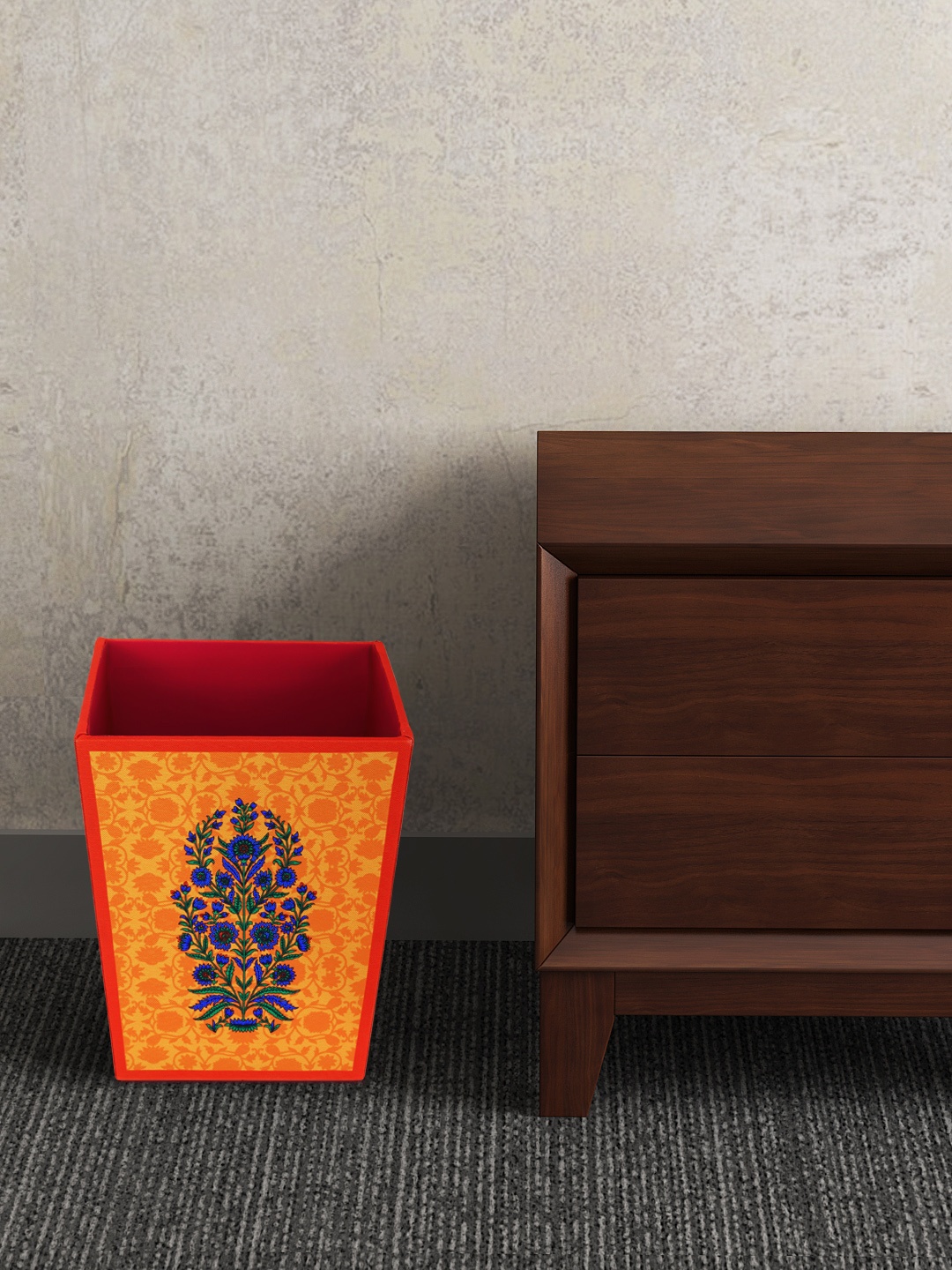The Right Pillow Height For People Who Wake Up With Neck Pain
Neck pain can ruin even the most peaceful night’s sleep. What if the real culprit is not your posture or your long hours on the phone, but simply your pillow’s height? Discover how choosing the right pillow can transform your mornings.

The Right Pillow Height for Neck Pain Relief: How to Wake Up Without Stiffness or Soreness.
Morning neck pain has become a silent epidemic of modern life. Many wake up with stiffness, blaming the mattress, the air conditioner, or even the long Netflix session the night before. Yet, the humble pillow, that soft companion that cradles the head every night, often escapes scrutiny. The truth is, pillow height plays a surprisingly large role in neck comfort. Whether one spends ₹500 or ₹5,000 on a pillow, if the height isn't right for the body, sleep becomes less of a retreat and more of a nightly battle.
So, if you want to know the right pillow height for neck pain relief, you will have to find the perfect balance of comfort and support to wake up refreshed, without stiffness, soreness, or morning discomfort.

The Right Pillow Height For People Who Wake Up With Neck Pain
Photo Credit: Pexels
Understanding the Secret Behind the Perfect Pillow Height
1. Why Pillow Height Matters More Than You Think
Pillow height isn't just about comfort; it's about alignment. Imagine the spine as a bamboo stick; it needs to stay straight and supported. Too high a pillow bends it upwards, straining neck muscles. Too low, and the head dips, tugging the spine downwards.
The body spends nearly one-third of its life in bed, so even a slight misalignment repeated nightly adds up. The result? Morning stiffness, dull headaches, and that constant urge to roll the neck after waking.
Think of it like wearing the wrong size shoes every day. The fit might seem manageable for a while, but discomfort eventually turns into pain. Pillow height follows the same rule, a few centimetres can mean the difference between deep sleep and daily discomfort.
2. The Science Behind Pillow Height and Spinal Alignment
The neck is a delicate structure of bones, muscles, and nerves. Its natural curve, called the cervical curve, needs gentle support through the night. If the pillow is too high, the neck flexes forward unnaturally. Too low, and it extends backward. Both positions strain muscles and restrict blood flow.
Doctors often point out that improper neck support can irritate nerves, leading to tingling in the arms or shoulders. Over time, chronic tension builds up, turning a minor issue into something that demands medical attention.
Research from sleep institutes globally shows that pillow height directly affects sleep quality and morning pain levels. People using ergonomically correct pillows report fewer aches and deeper rest. So, the right height isn't just about luxury, it's a form of health investment.
3. How to Identify the Perfect Pillow Height for You
The ideal pillow height depends on one's sleeping position, shoulder width, and even the firmness of the mattress. For most adults, the pillow should keep the head in line with the spine, neither tilted up nor down.
Here's a simple home test: lie on your back and ask someone to see if your head and spine form a straight line. If the chin tilts towards the chest, the pillow's too high. If it drops backward, it's too low.
Side sleepers need slightly thicker pillows to fill the space between the shoulder and head. Back sleepers fare best with medium height, while stomach sleepers, though not ideal for neck health, should go for very thin pillows or none at all.
A little observation can save a lot of discomfort later.
Also Read: Best Pillows For Neck Pain: How Memory Foam Pillows Can Bring Relief And Help You Sleep Better
4. The Impact of Mattress Type on Pillow Height
Surprisingly, your mattress plays a big role in determining the right pillow height. A soft mattress allows the body to sink deeper, reducing the height needed for neck alignment. A firm mattress, on the other hand, keeps the body higher, requiring a thicker pillow to maintain balance.
Many people change their pillow but forget their mattress has changed too, leading to mismatched comfort. It's like pairing a formal suit with slippers; it just doesn't work.
When buying a pillow, always test it on the same type of mattress you sleep on. If you've recently switched from a cotton to a memory foam mattress or vice versa, your pillow might need an update too. Sleep comfort comes from the harmony between both, not from one alone.
5. Materials Matter: Choosing the Right Pillow Fill
The filling inside a pillow decides how it behaves under pressure. Memory foam contours to your head, keeping it in place, while feather or down pillows offer a softer, more traditional feel. Latex pillows provide firm support with good bounce, ideal for those who prefer structure.
A common mistake is assuming that a soft pillow is automatically comfortable. In reality, overly soft pillows collapse under weight, losing height overnight. A good pillow should hold its shape while adapting gently to your posture.
For those living in humid cities, breathable materials like cotton or microfibre prevent overheating and maintain freshness. After all, waking up drenched in sweat isn't exactly the dream.

The Right Pillow Height For People Who Wake Up With Neck Pain
Photo Credit: Pexels
6. Age and Pillow Preferences: One Size Doesn't Fit All
As people age, spinal flexibility reduces, and the neck muscles become more sensitive to strain. What worked at 25 might not suit a 45-year-old. Older adults often benefit from slightly lower pillows that reduce neck flexion and promote easier breathing.
Children, on the other hand, should use low, soft pillows or none at all until their spines mature. Teenagers, growing fast, may need to adjust pillow height every few years.
In essence, the pillow journey evolves with age. Revisiting your choice every few years, just like one would with spectacles, ensures ongoing comfort and proper support.
7. Common Mistakes People Make When Choosing Pillows
Many walk into a store, press a pillow once, and declare it perfect. But the true test is in the morning after a full night's rest. Buying without considering sleeping position, mattress type, or personal anatomy often leads to regret.
Another common mistake is ignoring pillow maintenance. Over time, pillows lose firmness and height. A five-year-old pillow may look fine but might have flattened by several centimetres.
Some even double up pillows, thinking two thin ones equal one thick one, a sure route to neck strain. Pillow selection is personal, and shortcuts usually backfire.
Taking a few extra minutes to test and compare pays off in countless pain-free mornings.
8. The Role of Temperature and Climate in Pillow Comfort
In warm climates, pillow materials can influence sleep quality as much as height. A thick, heat-retaining pillow may cause sweating, restlessness, and constant tossing. Cooling gel pillows, cotton covers, and breathable designs make a big difference.
People in coastal areas might prefer moisture-wicking fabrics, while those in dry regions could go for softer, cushioned designs that retain a bit of warmth. The key is balance, a pillow should support, not suffocate.
Also, washing or airing pillows regularly prevents dust and humidity build-up, both of which can stiffen fillings and change the pillow's height subtly over time. Fresh, clean pillows don't just feel better; they perform better, too.
9. The Cost Factor: When to Spend and When to Save
Pillow prices vary wildly, from ₹400 street-side cotton cushions to premium memory foam ones costing over ₹6,000. The trick isn't in buying the most expensive but in finding what suits your body best.
Investing in quality materials that maintain height and structure for years is often wiser than replacing cheap pillows frequently. Think of it like investing in a good pair of shoes, a bit more today for lasting comfort tomorrow.
Still, price isn't everything. Some of the best pillows come from local brands using high-quality cotton or foam at fair prices. What matters most is consistency in height, comfort, and durability.
10. Small Daily Habits That Support a Healthier Neck
Even the best pillow can't fully protect the neck if daily habits are poor. Slouching over phones, long hours at laptops, and sleeping in awkward positions all undo the benefits of a perfect pillow.
A short stretching routine before bed helps relax tense muscles. Using rolled towels to support the neck during TV time can also prevent stiffness. Hydration, posture awareness, and regular pillow replacement (every 1.5–2 years) keep the neck in its best shape.
Sleep is nature's repair cycle. Supporting it with the right pillow height isn't indulgence, it's maintenance for the body's most hardworking support system.

The Right Pillow Height For People Who Wake Up With Neck Pain
Photo Credit: Pexels
Products Related To This Article
1. VISBY INDIA Memory Foam Pillow Contour Cervical Orthopaedic Memory Foam Pillows Supports Neck Pain and Shoulder Pain for Sleeping
2. ComfyHug Sleeping Pillow
3. Wakefit Cervical Pillow for Neck Pain and Shoulder Pain
4. Frido Ultimate Deep Sleep Pillow | King Size 4 Inch Height
5. MY ARMOR Memory Foam King Size Pillow - 5 Inch High
Finding the right pillow height may sound trivial, but it's often the simplest solution to chronic neck pain. Sleep should restore, not hurt. The goal is a balance, a pillow that aligns, supports, and soothes.
Next time you wake up rubbing your neck, don't rush for pain balms or massages. Instead, take a closer look at your pillow. That few centimetres of foam or feather could be the secret to a painless, energised morning.
Sleep well, wake brighter, and let your pillow do what it was meant to, cradle you into comfort, night after night.
Disclaimer: The images used in this article are for illustration purpose only. They may not be an exact representation of the products, categories and brands listed in this article.

















![Steam Iron Teflon Shoe Cover for ES-300,ST-96 [Only For ES-300 and ST-96 Model Electric Steam Irons]](https://m.media-amazon.com/images/I/51wwkttondL._SL160_.jpg)







